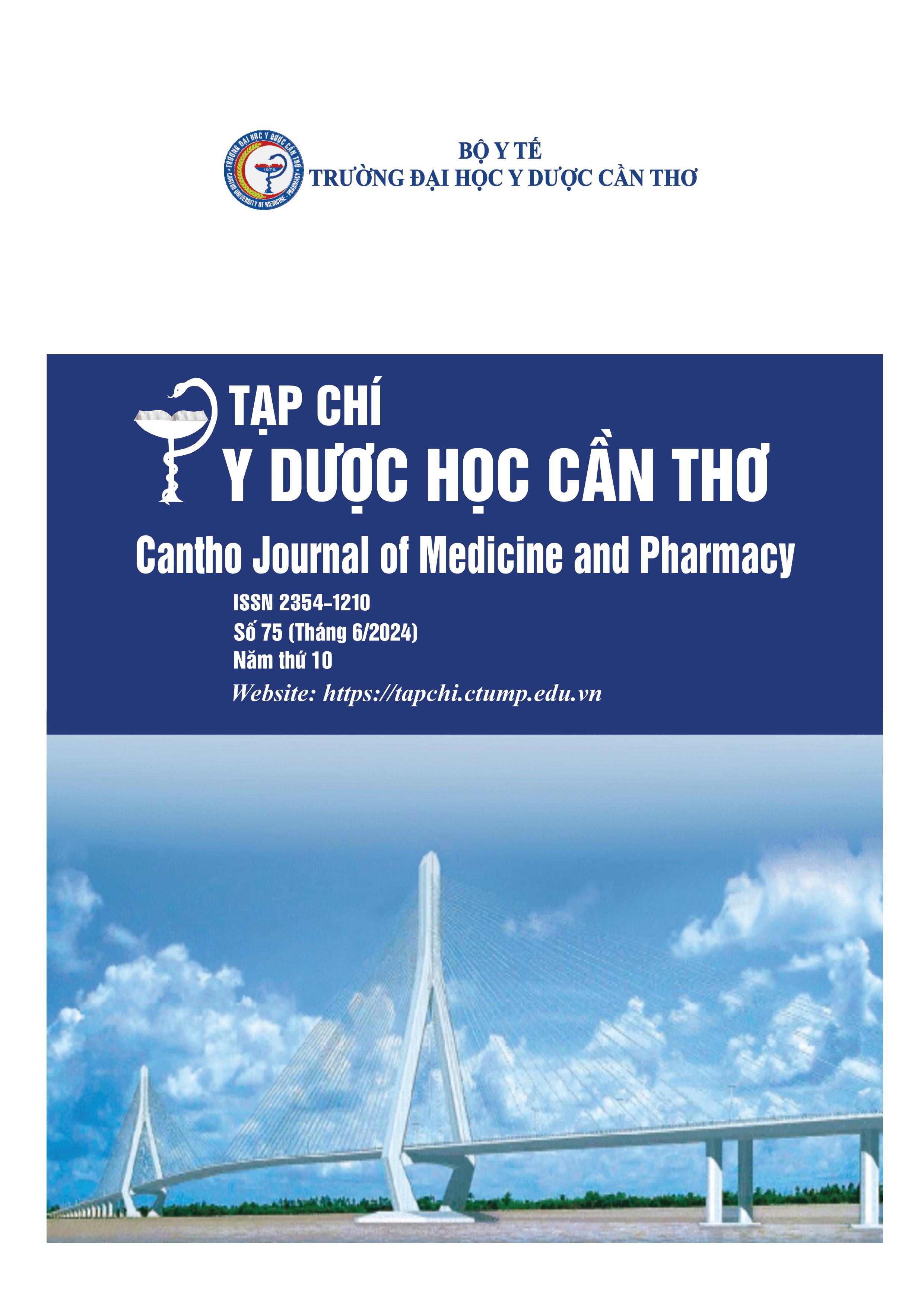WEANING OUTCOMES AND PREDICTORS OF SUCCESSFUL VENTILATOR WEANING IN STROKE PATIENTS REQUIRING INVASIVE VENTILATION
Main Article Content
Abstract
Background: From what has been recorded in the medical literature and in a number of studies, the majority of stroke patients who are receiving mechanical ventilation have a poor prognosis due to issues linked with the ventilator. As a result of these difficulties, the patient can sustain secondary brain damage, which would make their initial stroke state much worse. It is for this reason that weaning stroke patients out of artificial ventilation is a considerable problem in neuro-intensive care units. Objectives: To determine the rate of successful ventilator weaning as well as the factors that predict successful weaning from the ventilator. Materials and methods: A prospective study was conducted on 76 stroke patients who were receiving invasive ventilation at Can Tho Central General Hospital from February 2023 to January 2024. Results: The success rate of weaning was 26.3%, and the mortality rate was 13.1%. Six factors were associated with successful weaning outcomes: respiratory rate before the spontaneous breathing trial (SBT) (OR: 25), minute ventilation (MV) before SBT (OR: 9), FiO2 before SBT (OR: 1.1), systolic blood pressure (SBP) after SBT (OR: 1.1), rapid shallow breathing index (RSBI) after SBT (OR: 1.8), and SpO2 after SBT (OR: 1.2); all with p<0,05. Among these, SpO2 after SBT was a significant prognostic factor for successful weaning in stroke patients on mechanical ventilation, with an area under the curve (AUC) of 0.906 (p<0.001; 95% CI: 0.8-1.0). The optimal cutoff point for SpO2 after SBT was 95.5%, with a sensitivity of 90%, specificity of 80%, positive predictive value of 70%, and negative predictive value of 92.9%. Conclusion: The percentage of stroke patients who are able to successfully wean themselves off of artificial ventilation is relatively low. On the other hand, SpO2 following the SBT is an important prognostic factor for effectively weaning these patients off their medications.
Article Details
Keywords
Stroke patients, mechanical ventilation, successful predictors, weaning
References
2. Schonenberger S, Niesen WD, Fuhrer H, Bauza C, Klose C, et al. Early tracheostomy in ventilated stroke patients: Study protocol of the international multicentre randomized trial SETPOINT2 (Stroke-related Early Tracheostomy vs. Prolonged Orotracheal Intubation in Neurocritical care Trial 2). Int J Stroke. 2016. 11(3), 368-379, doi: 10.1177/1747493015616638.
3. Chawla R, Kansal S, Bali RK, Jain AC. ICU Protocols: A Step-wise Approach, Vol I. Springer Singapore. 2020. 79-90.
4. Trần Thị Oanh, Nguyễn Văn Thông, Nguyễn Hồng Quân. Nhận xét đặc điểm lâm sàng và một số yếu tố tiên lượng tử vong ở bệnh nhân đột quỵ có thông khí cơ học tại bệnh viện Đa khoa Đức Giang. Y học thực hành. 2013. 867(4), 92-95.
5. Steiner T, Mendoza G, De Georgia M, Schellinger P, Holle R, et al. Prognosis of stroke patients requiring mechanical ventilation in a neurological critical care unit. Stroke. 1997. 28(4), 711-5, doi: 10.1161/01.str.28.4.711.
6. Lahiri S, Mayer SA, Fink ME, Lord AS, Rosengart A, et al. Mechanical Ventilation for Acute Stroke: A Multi-state Population-Based Study. Neurocrit Care. 2015. 23(1), 28-32, doi: 10.1007/s12028-014-0082-9.
7. Gujjar AR, Deibert E, Manno EM, Duff S, Diringer MN. Mechanical ventilation for ischemic stroke and intracerebral hemorrhage: indications, timing, and outcome. Neurology. 1998. 51(2), 447-51, doi: 10.1212/wnl.51.2.447.
8. Wendell LC, Raser J, Kasner S, Park S. Predictors of extubation success in patients with middle cerebral artery acute ischemic stroke. Stroke Res Treat. 2011. 2011, 248789, doi: 10.4061/2011/248789.
9. Mã Nhơn Khiêm. Nghiên cứu đặc điểm lâm sàng, cận lâm sàng, điều trị và các yếu tố liên quan ở bệnh nhân đột quỵ não cấp có thở máy tại Bệnh viện Đa khoa tỉnh Cà Mau năm 2015-2016. Luận án chuyên khoa cấp II. 2016.
10. Powers WJ, Rabinstein AA, Ackerson T, Adeoye OM, Bambakidis NC, et al. 2018 Guidelines for the Early Management of Patients With Acute Ischemic Stroke. Stroke. 2018. 49(3), 46-110, doi: 10.1161/STR.0000000000000158.
11. Hà Viết Ngọc, Mai Văn Cường, Phùng Quang Tùng. Nghiên cứu một số yếu tố liên quan đến cai thở máy thất bại ở bệnh nhân hồi sức tích cực. Journal of 108-Clinical Medicine and Phamarcy. 2024. 19(1), 7-12, doi: 10.52389/ydls.v19i1.2106.
12. Lioutas VA, Hanafy KA, Kumar S. Predictors of extubation success in acute ischemic stroke patients. J Neurol Sci. 2016. 368, 191-4, doi:10.1016/j.jns.2016.07.017.
13. Popat C, Ruthirago D, Shehabeldin M, Yang S, Nugent K. Outcomes in Patients With Acute Stroke Requiring Mechanical Ventilation: Predictors of Mortality and Successful Extubation. Am J Med Sci. 2018. 356(1), 3-9, doi: 10.1016/j.amjms.2018.03.013.
14. Baptistella AR, Sarmento FJ, da Silva KR, Baptistella SF, Taglietti M, et al. Predictive factors of weaning from mechanical ventilation and extubation outcome: A systematic review. J Crit Care. 2018. 48, 56-62, doi: 10.1016/j.jcrc.2018.08.023.


